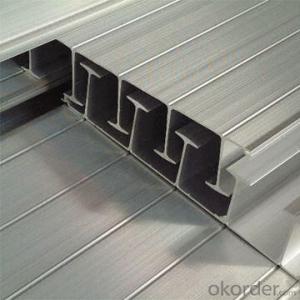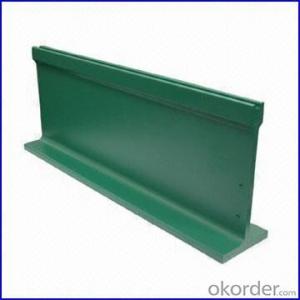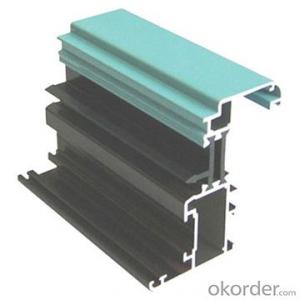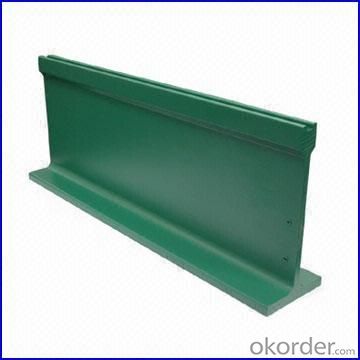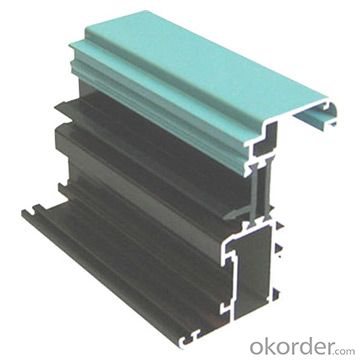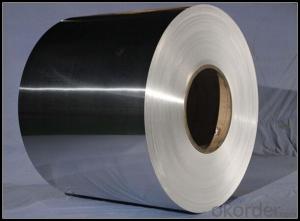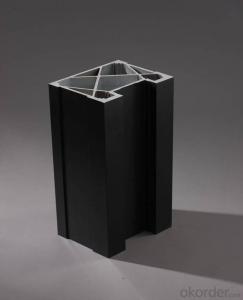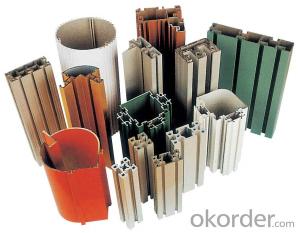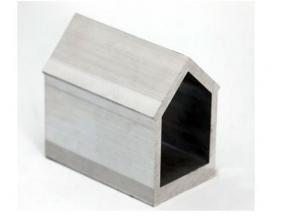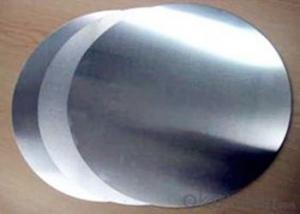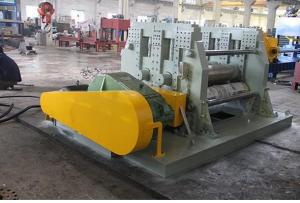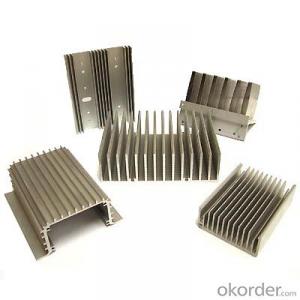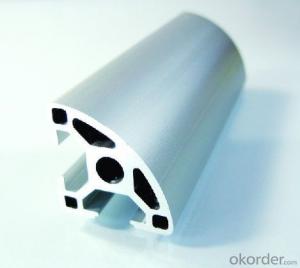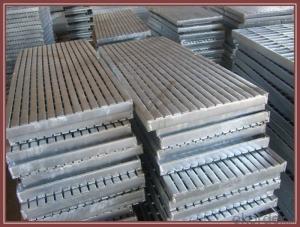80 20 Aluminum Extrusion Profiles with Competitive Price
- Loading Port:
- China Main Port
- Payment Terms:
- TT OR LC
- Min Order Qty:
- -
- Supply Capability:
- -
OKorder Service Pledge
OKorder Financial Service
You Might Also Like
Aluminium is a relatively soft, durable, lightweight, ductileand malleablemetalwith appearance ranging from silvery to dull gray, depending on the surfaceroughness. It is nonmagnetic and does not easily ignite. A fresh film ofaluminium serves as a good reflector (approximately 92%) of visible lightand an excellent reflector (as much as 98%) of medium and far infraredradiation. The yield strength of pure aluminium is 7–11 MPa,while aluminium alloys have yield strengths ranging from200 MPa to 600 MPa. Aluminium has about one-third the densityand stiffness of steel. It is easily machined,cast, drawn and extruded.
Features:
Material | Alloy 6063,6061,6005or according to customer’s choice |
Temper | T3, T4, T5, T6 |
Surface | Anodize, electrophoresis, powder coating, PVDF coating, wood grain painting, matted, etc. |
Length | Coating 6.5 meters, Anodizing 6.5 meters, Mill finish 5 meters |
Application | Industrial, electrical equipment(TV set, air conditioner, refrigerator, computer), decoration,construction, transportation |
Custom Made | We can package following with customer's request. |
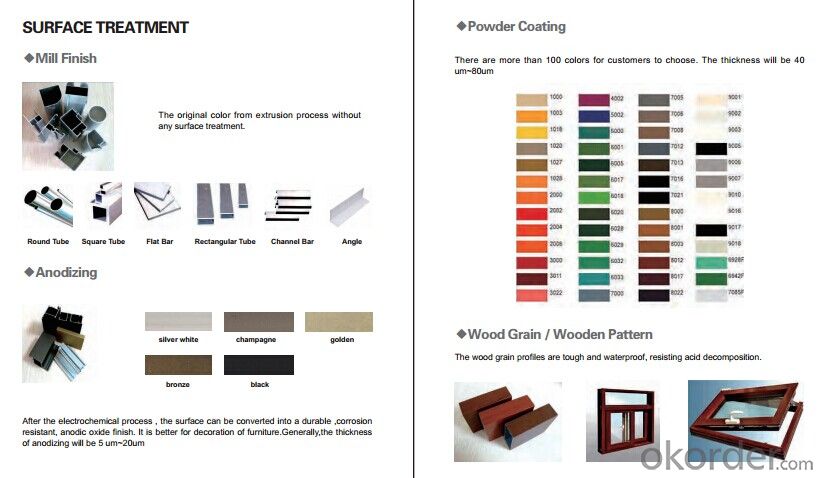
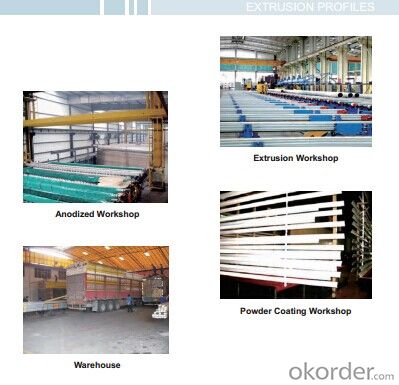
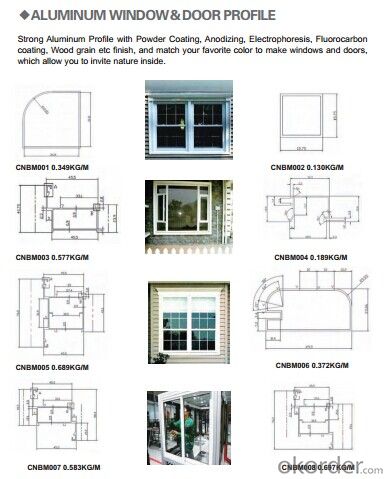
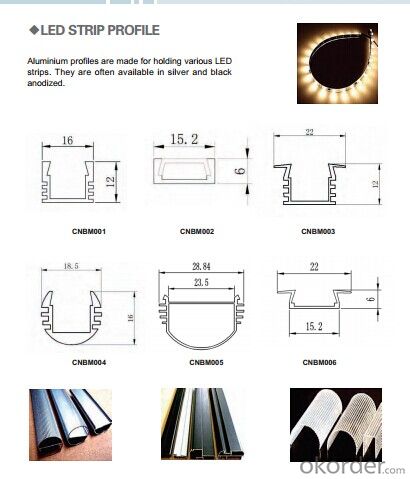
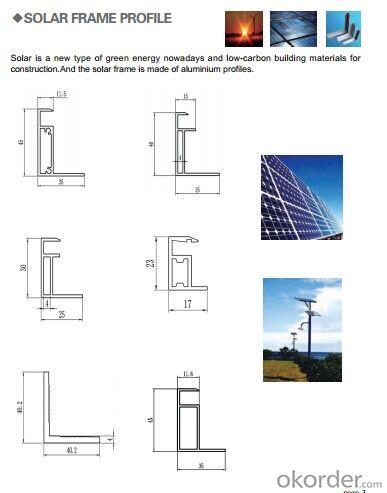
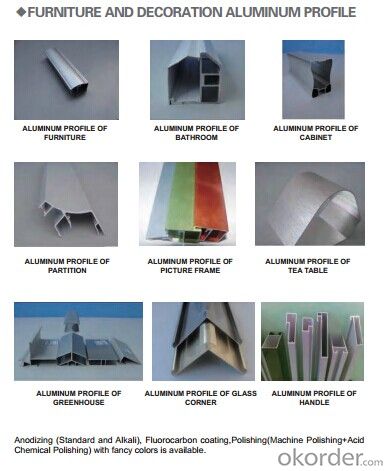
- Q: What are the different bending options available for aluminum profiles?
- There are several bending options available for aluminum profiles, depending on the specific requirements and desired outcomes. Some of the common bending methods for aluminum profiles include: 1. Roll Bending: This method involves passing the aluminum profile between a series of rollers to achieve the desired bend. Roll bending is typically used for larger and thicker profiles, as it provides a gradual and consistent bend. 2. Press Bending: Press bending uses a hydraulic or mechanical press to apply force and shape the aluminum profile into the desired form. This method is suitable for both small and large profiles and can achieve various bend angles. 3. Mandrel Bending: Mandrel bending involves inserting a mandrel, which is a rod or tube, into the aluminum profile to maintain its shape during the bending process. This method ensures precise and uniform bends, making it suitable for complex shapes and tight radius bends. 4. Stretch Bending: Stretch bending applies controlled stretching forces to the aluminum profile, allowing it to flex and bend. This method is often used for profiles with large radii and gentle curves. 5. Rotary Draw Bending: Rotary draw bending utilizes a die and a rotating arm to bend the aluminum profile around a specific radius. This method is highly accurate and commonly used for precise and repeatable bends. 6. Heat Bending: Heat bending involves applying heat to the aluminum profile to soften it before bending. Once the desired bend is achieved, the profile is cooled to retain its new shape. This method is suitable for profiles with complex shapes and sharp angles. Each bending option has its advantages and limitations, and the selection depends on factors such as the profile size, shape complexity, bend angle, and required precision. Consulting with a professional or a bending specialist is recommended to determine the most appropriate bending method for specific aluminum profile applications.
- Q: Are there any specific requirements for transporting and storing aluminum profiles?
- Yes, there are specific requirements for transporting and storing aluminum profiles. When it comes to transporting aluminum profiles, it is important to ensure that they are adequately protected to avoid any damage during transit. This can be done by using appropriate packaging materials such as foam or cardboard to provide cushioning and prevent any scratches or dents. Additionally, the profiles should be securely fastened or strapped in place to prevent movement or shifting during transportation. In terms of storage, it is crucial to store aluminum profiles in a dry and well-ventilated area to prevent any moisture accumulation, which can lead to corrosion. They should be kept away from direct sunlight and extreme temperatures, as excessive heat can cause distortion or warping of the profiles. Furthermore, it is recommended to store the profiles in a horizontal position to prevent any bending or sagging. If vertical storage is necessary, proper support should be provided to ensure that the profiles remain straight and undamaged. Overall, following these requirements for transporting and storing aluminum profiles will help maintain their integrity and ensure their quality upon arrival or when retrieved for use.
- Q: What are the different packaging options for aluminum profiles?
- There are several packaging options available for aluminum profiles, depending on the specific requirements and preferences of the customers. Some of the common packaging options include: 1. Bundles: Aluminum profiles can be packed in bundles, where several profiles of the same length and shape are bundled together using straps or bands. This packaging option is ideal for smaller profiles and offers easy handling and transportation. 2. Wooden crates: For larger or more fragile aluminum profiles, wooden crates are often used. The profiles are securely placed inside the crate and then nailed or screwed shut. Wooden crates provide excellent protection during shipping and can be customized to fit the specific dimensions of the profiles. 3. Cardboard tubes: Thin and lightweight aluminum profiles, such as those used in the packaging industry, can be packaged in cardboard tubes. These tubes provide a cost-effective and lightweight solution for transportation and storage, while still offering adequate protection. 4. Pallets: When dealing with a large volume of aluminum profiles, pallets are often used for packaging. Profiles are stacked and secured on a pallet using strapping or shrink wrap. This packaging option allows for efficient handling, as pallets can be easily loaded and unloaded using forklifts or pallet jacks. 5. Custom packaging: Customers may have unique packaging requirements based on their specific needs. In such cases, custom packaging options can be developed, such as foam inserts, plastic wraps, or specific labeling. Custom packaging ensures that the profiles are adequately protected and that any specific handling instructions are followed. In summary, the packaging options for aluminum profiles can vary depending on factors like profile size, fragility, and volume. Whether it's bundling, wooden crates, cardboard tubes, pallets, or custom packaging, each option offers its own benefits in terms of protection, handling, and ease of transportation.
- Q: This question asks whether aluminum profiles can be joined using welding or bolting methods.
- <p>Yes, aluminum profiles can be both welded and bolted together. Welding aluminum requires specific techniques and equipment due to its high thermal conductivity, but it is possible and results in a strong joint. Bolting is a common method for joining aluminum profiles, as it is quick, easy, and does not require melting the material. It is important to use appropriate hardware and techniques to ensure a secure and durable connection.</p>
- Q: Aluminum profiles 1, 2, 3, 4, 5, 7, 6, 8 line characteristics, what is the difference, please master more advice
- No, ah, who makes me enthusiastic?I can only say something about it1 system heat conduction, high conductivity, corrosion resistance, good weldability, generally applicable to electrical appliances, heat exchangers, plates, strips5 medium strength alloy, good formability, corrosion resistance, weldability, generally applicable to ships, vehicles, tubes, bars6 series can be very good, continuous extrusion, corrosion resistance, surface treatment is good, generally applicable to complex sections, hollow profiles, high-speed rail subwayThe alloy of 7 strength, welded structural alloy, solid profile alloy seems to be a shell case. Military companies have had this order beforeIt's too general. There are many alloys in each department
- Q: How do you prevent galvanic corrosion when combining aluminum profiles with other metals?
- To prevent galvanic corrosion when combining aluminum profiles with other metals, there are a few effective measures that can be taken: 1. Use compatible metals: Select metals that are close in the galvanic series to minimize the potential difference between them. This reduces the likelihood of galvanic corrosion occurring. For example, using stainless steel or titanium with aluminum can be a good choice. 2. Insulate the metals: Use insulating materials, such as non-conductive coatings, paints, or tapes, to create a barrier between the aluminum and other metals. This prevents direct contact and inhibits galvanic corrosion. 3. Apply protective coatings: Apply protective coatings such as anodizing or powder coating to the aluminum surface. These coatings act as a protective layer, preventing direct contact between the aluminum and other metals, thus reducing the risk of galvanic corrosion. 4. Use isolating washers or gaskets: When fastening aluminum profiles to other metals, use isolating washers or gaskets made of non-conductive materials like rubber or plastic. These washers or gaskets create a barrier between the metals, preventing galvanic corrosion. 5. Design considerations: Design the structure in such a way that any potential for water or moisture accumulation between dissimilar metals is minimized. Proper drainage and ventilation can help reduce the chances of galvanic corrosion. 6. Regular maintenance and inspections: Conduct regular inspections to identify any signs of galvanic corrosion early on. If corrosion is detected, take appropriate action to rectify the situation, such as replacing damaged components or applying protective coatings. By following these preventive measures, the risk of galvanic corrosion can be significantly reduced, ensuring the longevity and performance of the combined aluminum profiles and other metals.
- Q: What are the aluminum profile manufacturers in Jiangsu?
- How to choose the industrial aluminum profiles, this problem for the just contact with industrial aluminum profile friends, is really a serious problem to consider.That selection of industrial aluminum manufacturers is not good, money, goods is not good, he can give you redo is OK, but also take time; meet industrial aluminum manufacturers some black, and you may be wrangling, that egg pain.
- Q: Are aluminum profiles resistant to termites and insects?
- Yes, aluminum profiles are resistant to termites and insects.
- Q: This question asks about the various methods for connecting aluminum profiles using fasteners.
- <p>There are several ways to join aluminum profiles together using fasteners: 1. Bolts and Nuts: Commonly used for strong and removable connections. 2. Rivets: Provide a permanent connection, suitable for high-stress applications. 3. Screws: Offer a secure and adjustable connection, often used in furniture and construction. 4. Pins: Used for alignment and positioning, often in lighter applications. 5. Adhesives: Can be used for a more aesthetically pleasing joint, though not as strong as mechanical fasteners. 6. Welding: Although not a fastener method, it is a common way to join aluminum profiles for a permanent and strong bond. Each method has its advantages and is chosen based on the specific requirements of the application, such as strength, permanence, and ease of assembly.</p>
- Q: How do you ensure proper electrical grounding with aluminum profiles?
- To ensure proper electrical grounding with aluminum profiles, there are a few key steps that need to be followed. Firstly, it is important to ensure that all aluminum profiles are clean and free from any dirt, dust, or oxidation. This can be achieved by using a suitable cleaning agent or solvent to remove any contaminants that may hinder the grounding process. Next, proper electrical grounding can be achieved by using conductive hardware such as grounding clips or brackets specifically designed for aluminum profiles. These hardware components should be securely attached to the aluminum profiles, ensuring a reliable electrical connection. Additionally, it is crucial to establish a solid electrical connection between the aluminum profiles and the grounding system. This can be achieved by using copper or aluminum grounding conductors that are properly sized and securely connected to both the aluminum profiles and the grounding system. Furthermore, it is important to regularly inspect the grounding system to ensure its effectiveness. This can involve checking for any loose connections, signs of corrosion, or damage to the grounding conductors. Any issues should be promptly addressed and repaired to maintain proper electrical grounding. Lastly, it is recommended to consult with a qualified electrician or engineer who specializes in electrical grounding when working with aluminum profiles. They can provide specific guidance and ensure compliance with relevant electrical codes and standards to ensure proper and safe electrical grounding.
Send your message to us
80 20 Aluminum Extrusion Profiles with Competitive Price
- Loading Port:
- China Main Port
- Payment Terms:
- TT OR LC
- Min Order Qty:
- -
- Supply Capability:
- -
OKorder Service Pledge
OKorder Financial Service
Similar products
Hot products
Hot Searches
Related keywords
